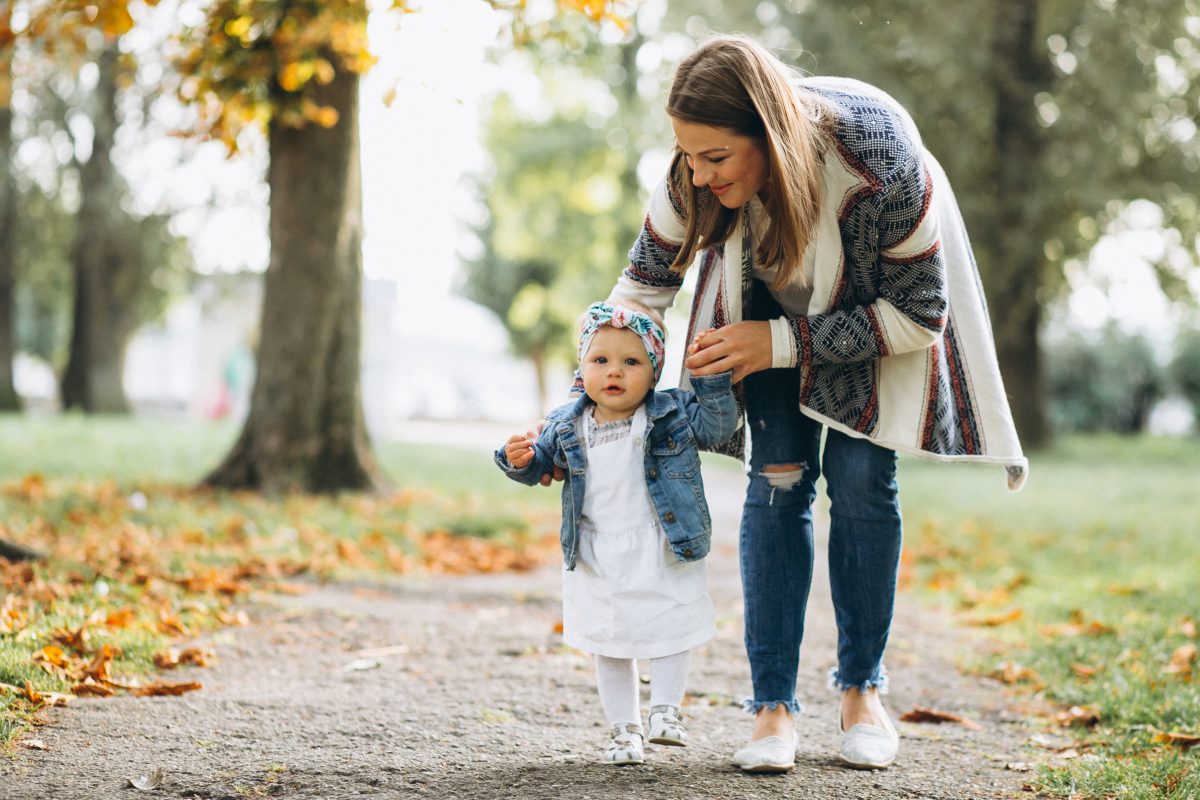How to Teach Your Child to Walk

Every new parent wants to get first-hand experience of raising their children. They keep observing the times their baby burps, eats, drinks, gurgles and laughs. In the initial stages of a child’s years, parents take note of every little action that the child does with great dedication. However, there’s more to a child’s development than just noting his burps and laughs. We should look forward to marking the other more significant milestones of the child too. This includes the first time the baby rolls over to his side and belly, and then to crawling. These tiny gestures show the actual development of a child’s brain. He or she should be able to walk soon and as parents you should note the same too.
Now, the first point to note is the age when the child is able to walk. It could be anywhere around the time they are 1 year old. However, it could be an approximate time and it could even be before where they stand with support, or stand without support and simply take limited number of steps. It is around this time when they also begin to sit and yet this journey from sitting to walking is a long one.
The Basic Understanding of Posture and Muscles
There are two sets of muscles that you must know. There are tiny set of muscles that are integral to fine motor skill development. These are in the fingers, and hands and toes. There are larger muscles that lead to gross motor skills.
These all contribute to your child standing with support by 12 to 15 months of age. Remember, this could vary from one kid to the other. Still, if by 18 months also your child does not walk, or make an effort to stand with or without support, consult a doctor.
Now, that we have learned about the age by which kids normally start walking, let’s also note that as parents, we have to babyproof the home. Installing baby gates at the landing of the staircase, or sealing all electrical sockets and locking up all cleaning supplies, and medicine cabinets are all necessities. You may want to then proceed with the actual exercises.
Exercises to Help Your Kid Take His First Steps
- Make them Sit on a Stool: Get a small stool where they do not get any back support. But make sure to have their feet stay firmly on ground. Do not leave them unguarded when they sit on this small stool. This way, their core muscles start developing and their legs and lower body also help in keeping their torso or trunk area in place. Make the kids bend and touch their toes or pick a toy from the floor to ensure they also can stretch themselves at this age.
- Make the Kids Walk Barefoot: We humans, began walking in the wild barefoot, and that comes naturally to us. So, make sure to teach the same to your child and make them go barefoot. This is essential for initiating proprioceptive feedback that the feet send to the brain. This teaches the brain on what surface they are walking. However, at this point, let them walk around at home on carpets. This shall also save them from hurting themselves when they fall, which will be pretty often when they begin walking.
- Tempt the Child: If you look back, you must have lured your child with a toy or a sweet to move forward. That same way, you will also need to tempt the child to walk around. Keep moving the toys out of their reach just so that they go to pick it up.
- Go on a Walk: Parents might try to stand behind the child at first to help the kid to walk. It is essential for kids to distribute their body weight evenly and then walk. If you lead from front or hold hands too much, chances are that they will lean forward. This will cause a problem to their posture later on. However, it is mandatory to help the child become confident of standing up. You may place furniture for the child to hold on to as he or she navigates. This kind of movement is the best but once again, make sure to have stable furniture only nearby and not ones like a computer chair or anything with wheels. Have furniture pieces that are strong and which do not move with the kid.
Babies and Walkers
Many parents feel their kids might need walkers or jumpers to be around the home and learn walking. Pediatricians however, would not recommend you to go for these walkers as they often led to injuries and more falls. At least this is what a report from Harvard Health Publishing states in this article. Earlier, the walkers were without too many safety features. But even in 2014, as many as 2000 toddlers were in emergency room due to some fall or injury due to these walkers.
You may use them to keep them entertained, but definitely for a short while and when you are around and only in the safety of their room.
Teaching a child to walk is going to be a slow and steady process. Once, they start walking, running will follow suit and that’s when parents too have to be on their toes quite literally. So happy parenting, and stay hydrated for a new phase in your and your child’s life!
To check out more amazing products of SapienKid, Visit our product page CLICK HERE!
Also, join us in experiencing a new-age parenting, CLICK HERE!






